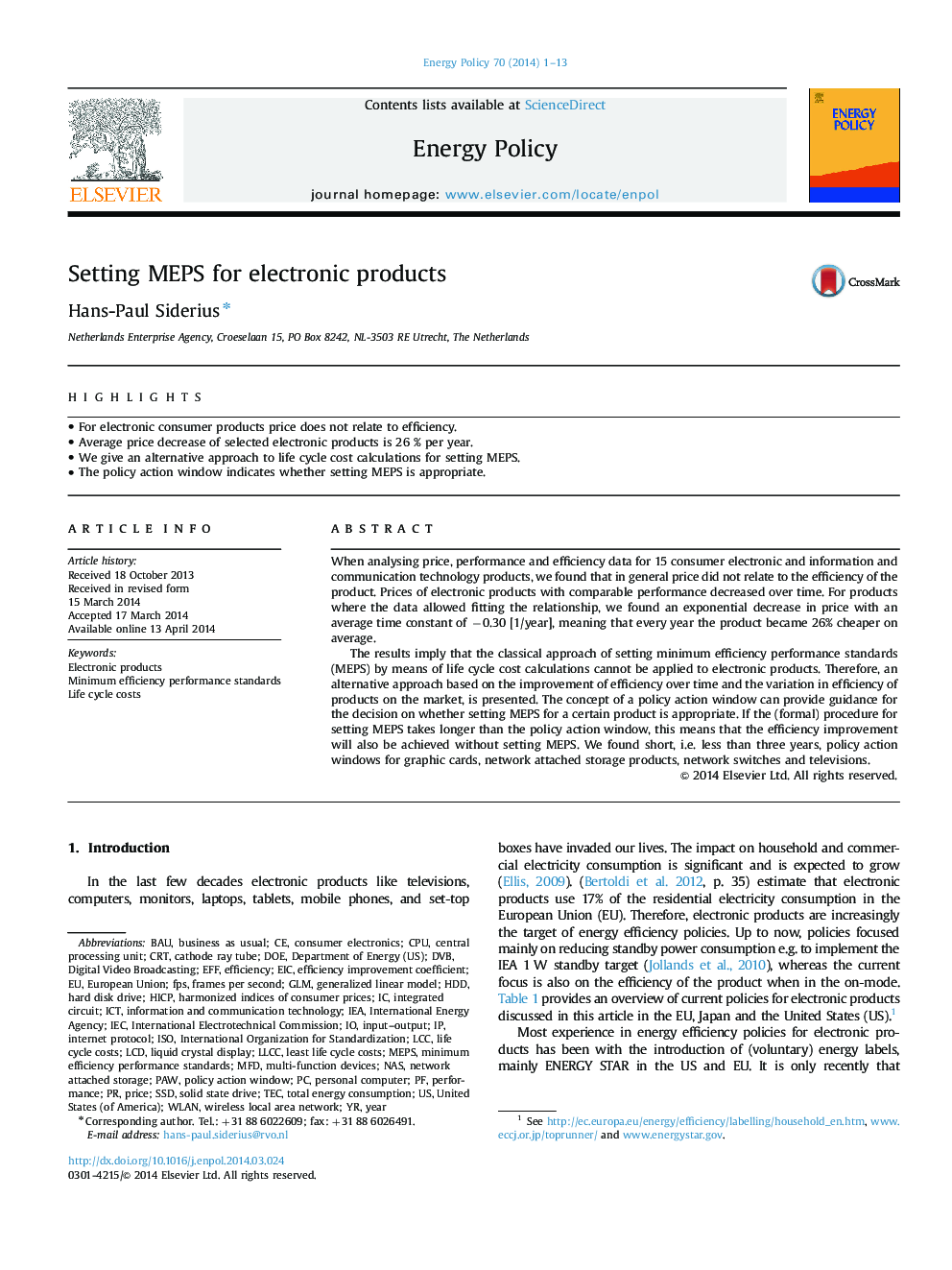| Article ID | Journal | Published Year | Pages | File Type |
|---|---|---|---|---|
| 7401971 | Energy Policy | 2014 | 13 Pages |
Abstract
The results imply that the classical approach of setting minimum efficiency performance standards (MEPS) by means of life cycle cost calculations cannot be applied to electronic products. Therefore, an alternative approach based on the improvement of efficiency over time and the variation in efficiency of products on the market, is presented. The concept of a policy action window can provide guidance for the decision on whether setting MEPS for a certain product is appropriate. If the (formal) procedure for setting MEPS takes longer than the policy action window, this means that the efficiency improvement will also be achieved without setting MEPS. We found short, i.e. less than three years, policy action windows for graphic cards, network attached storage products, network switches and televisions.
Keywords
MFDNASCrtGLMHDDPAWLCCIEAFpsDVBCPUDigital video broadcastingDOEBaUInternational energy agencyEuropean UnionEffLCDConsumer electronicsISOEfficiencyHard disk driveInternational Organization for Standardizationliquid crystal displayframes per secondInformation and Communication TechnologyICTcathode ray tubeIntegrated circuitGeneralized linear modelEICMEPsLife cycle costscentral processing unitinput–outputInternet protocolBusiness as UsualInternational Electrotechnical CommissionIEC
Related Topics
Physical Sciences and Engineering
Energy
Energy Engineering and Power Technology
Authors
Hans-Paul Siderius,
